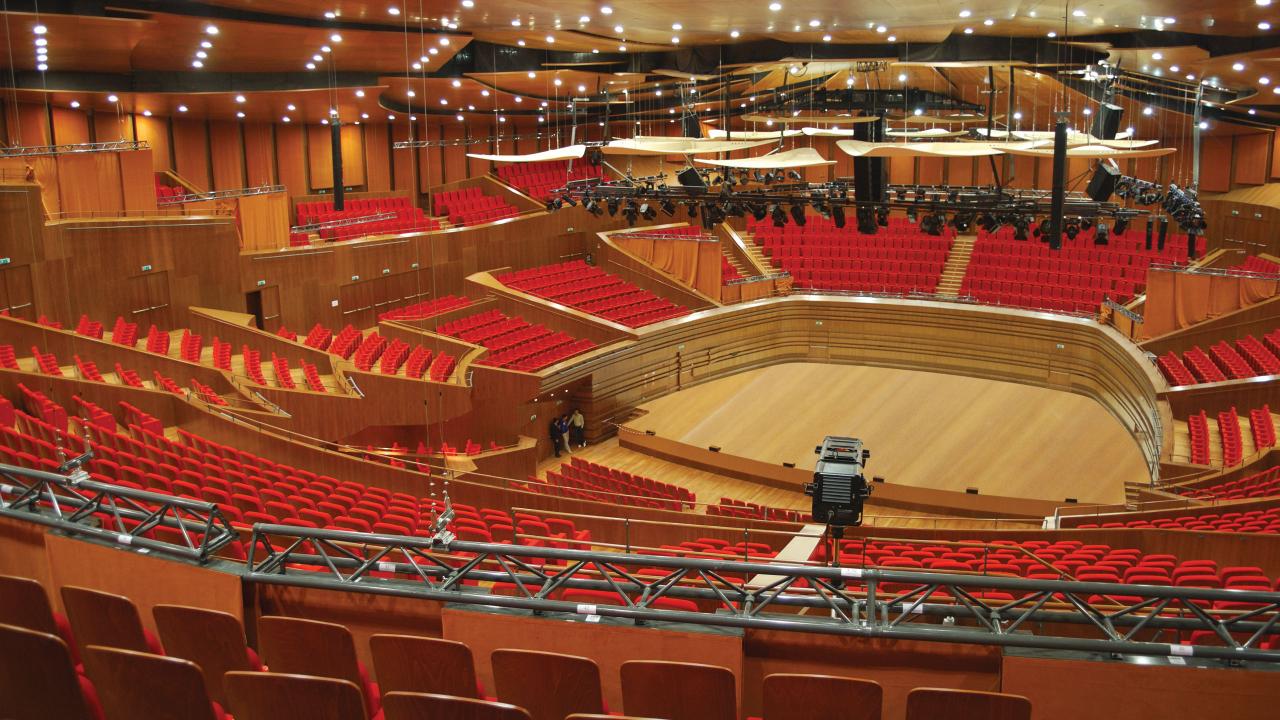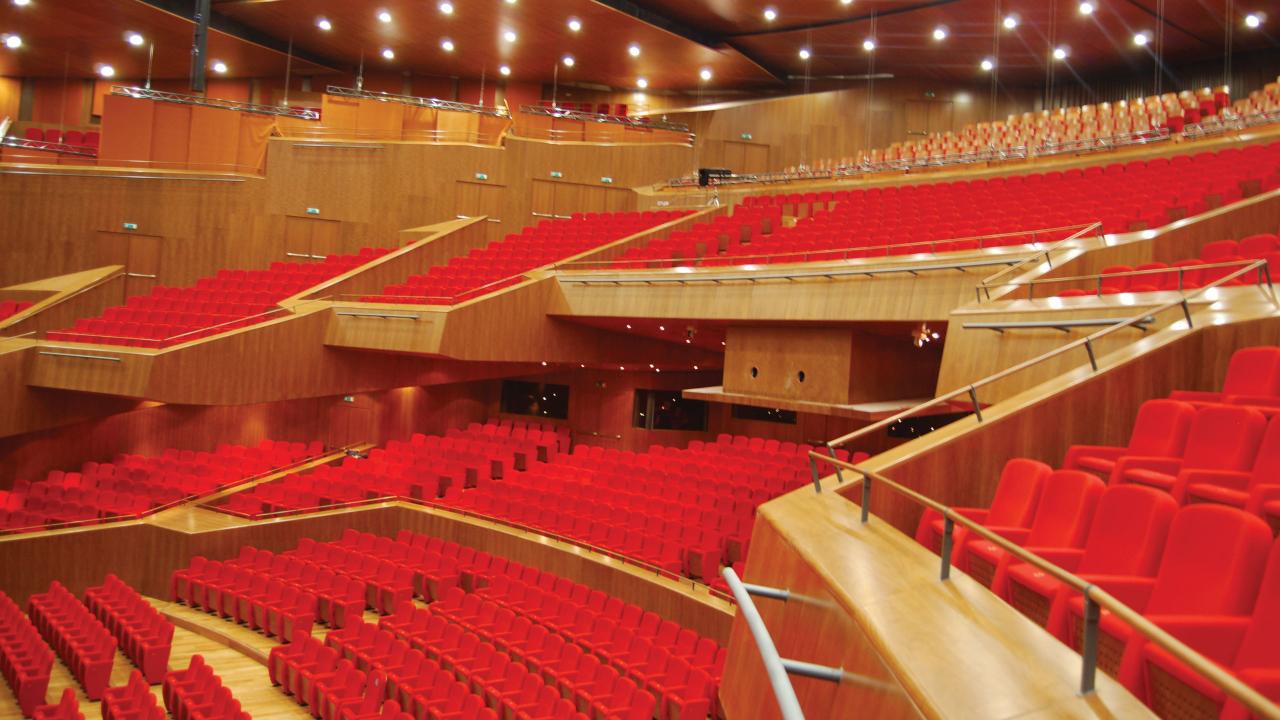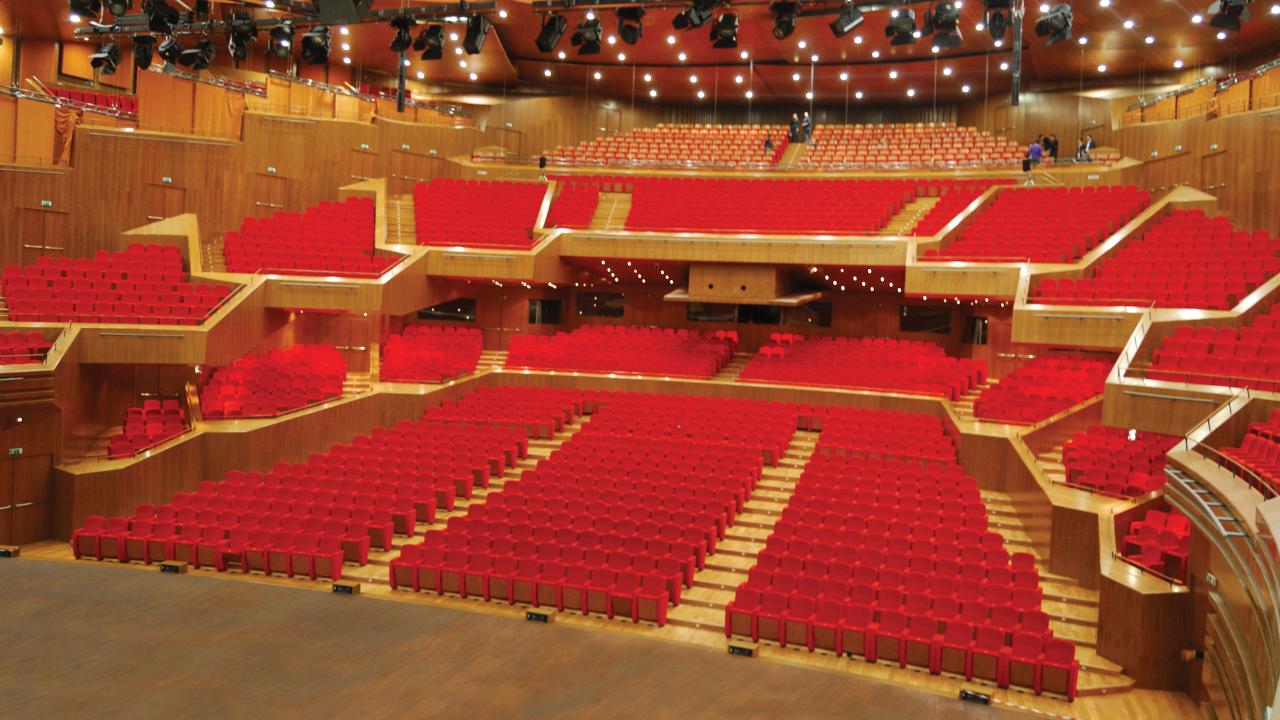Astana Concert Hall, Kazakhstan
Astana is the rapidly changing capital city of Kazakhstan, creating a new bridge between Asia and Europe. A key part of the city’s transformation has been the creation of a new Central Concert Hall.
Awarded after an international competition, the building was conceived and designed by Italian architect Manfredi Nicoletti. The Concert Hall was officially opened in December 2009 and covers 54,000m2 between the Presidential Palace and Senate and sees American black cherry take part in creating a stunning interior.
The building shape itself is reminiscent of the petals of a flower. A corolla-shaped external shell is constructed around a composition of staggered and curved inclined walls or ‘overlapping veils’, made of concrete with blue back-painted glass panel cladding protecting the building's interior. The petal-shaped shell structure also makes it possible to create more sheltered and isolated premises to deal with the extreme hot and cold of the Kazak weather conditions. One of the project aims was to construct a “flower of the Steppes”.
The building houses one of world’s biggest and most impressive Concert Halls for classical music with a total of 3,500 seats in a vineyard seating arrangement. There are also two smaller music halls, a cinema and conference halls, with 400 and 200 seats each, restaurants, bars and a 3,000m2 lobby. One of the main concepts of the design was to create a massive urban scale internal public square that could welcome the citizens of Astana throughout the entire year. The internal piazza is clad entirely in American black cherry both inside and outside, with an overall height of 25m. The imposing auditorium is suspended across the building’s central axis with the overall shape similar to a ‘Dombra’ – a typical Kazak stringed instrument.
The auditorium’s interior space also benefits from a suspended American black cherry panelled ceiling with the side of the auditorium also completely clad with black cherry. A system of computer-controlled moving acoustic veils allow the sound absorption levels to be carefully controlled, while the so-called ‘black hole’ double ceiling forms a cavity above the orchestra to regulate acoustic absorption.
American cherry and U.S. hardwoods have extensive environmental credentials which are supported by national forest assessments undertaken by the U.S. federal government every ten years. Between 1953 and 2007 the volume of hardwood standing in U.S. forests more than doubled from 5 billion m3 to 11.4 billion m3. This huge expansion of the resource coincides with a period of significant increase in U.S. and international wood demand, and is testament to a long term commitment to good forest practice and sustainable hardwood production. Wood provides the perfect acoustic and aesthetic qualities for concert halls and auditoriums, and American black cherry not only has good acoustic properties, it is also tough and easy to manipulate, is predictable, pliable, resistant to decay and very beautiful.
Nicoletti is in good company with his specification of such a desirable hardwood. American black cherry is widely used across Europe, and dominates high profile projects including Santander’s Group Headquarters in Madrid by Kevin Roche John Dinkeloo & Associates, Rafael Moneo’s Navarra General Archive in Pamplona, and international music venue, the Rome Auditorium by Renzo Piano.


